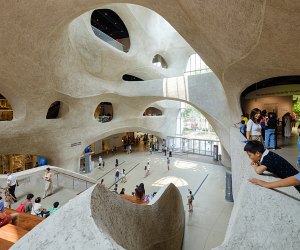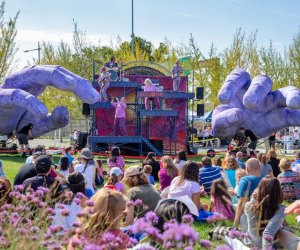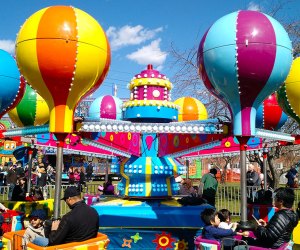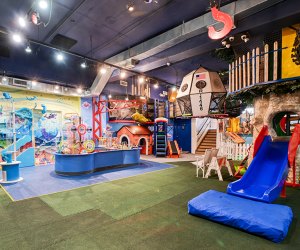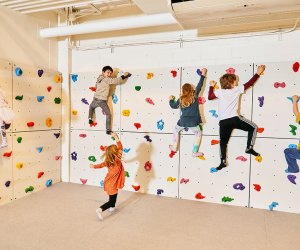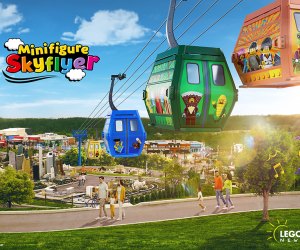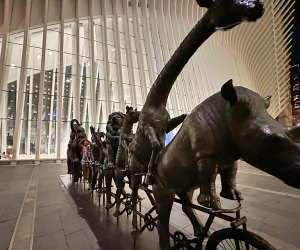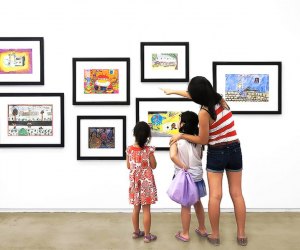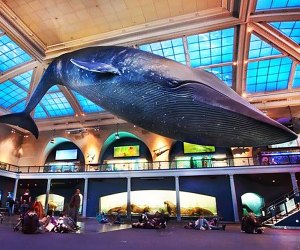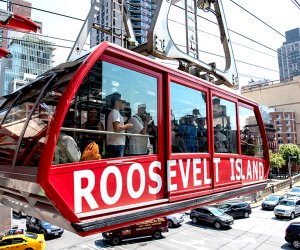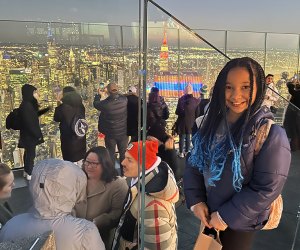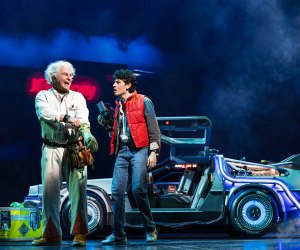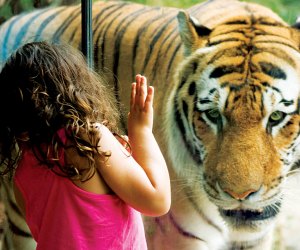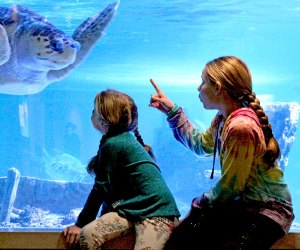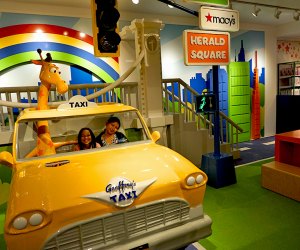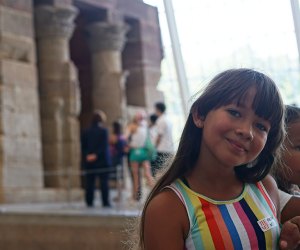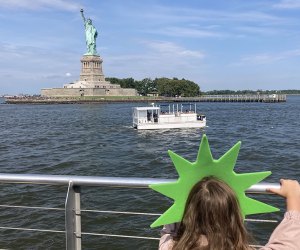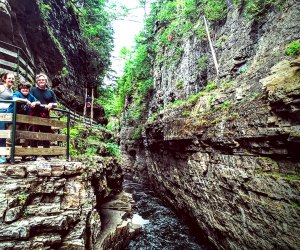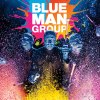See Live Crocodiles at the American Museum of Natural History
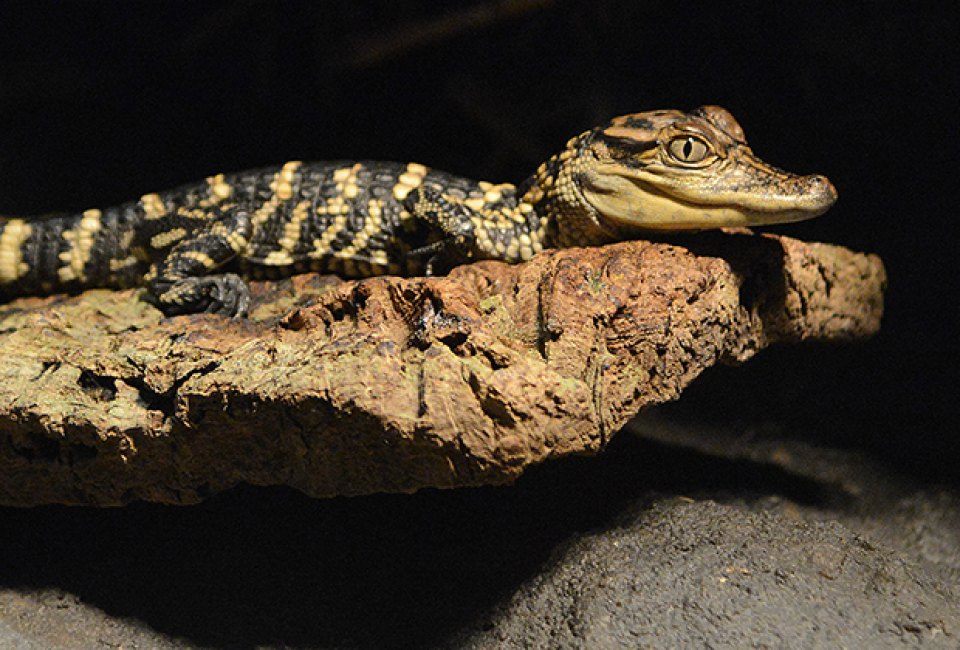
Live animal exhibits always get a spot on my family's New York City summer bucket list, so there was no way we would miss the new reptile exhibit at the American Museum of Natural History.
The museum often features exhibits with small live animals like frogs and spiders, and of course it's popular but seasonal live butterfly atrium. This year, the museum is upping the wow factor with a live crocodile and alligator exhibit, Crocs: Ancient Predators in a Modern World. That's right, live crocodiles! We've got the details on the museum's newest exhibit, opening this Memorial Day weekend.
OUR LATEST VIDEOS
Crocs: Ancient Predators in a Modern World goes beyond just showcasing these fascinating creatures. It examines the species' evolution and long history on Earth, incorporating current research with fossils and mummified crocs dating back millions of years. You might already know the crocodilian family is a close relative to dinosaurs and most people know the familiar green-hued critters found lurking near lakes and rivers resemble the tick-tock croc from the Peter Pan story. However, after touring the exhibit, you'll discover that these animals were surprisingly diverse. The 23 species of crocodiles alive today represent just a fraction of the number that once roamed our planet. Some ancient ancestors were galloping, hoofed creatures. Others lived and hunted in water and resembled dolphins.
RELATED: Feathered Dinosaurs Debuts at Natural History Museum
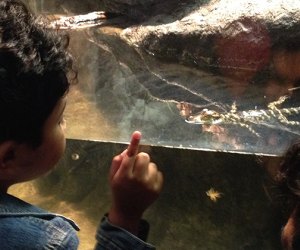
Get close to real baby alligator hatchlings without fear of a bite! Photo by the author.
While the exhibit sheds new light on these misunderstood reptiles, kids will likely be more excited about the live crocodiles and alligators on display. Four species are represented: the secretive slender-snouted crocodile from Central Africa; a pair of currently endangered Siamese crocodiles from southeast Asia; the West African dwarf crocodile (a nocturnal hunter); and a family of adorable baby American alligators.
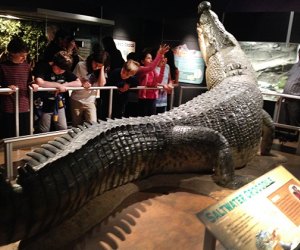
The impressive saltwater crocodile model and other displays like fossils teach kids about these ancient and living predators. Photo by the author.
The exhibit offers interactive video screens throughout the hall, some with a digital curator answering common questions. Each focuses on various attributes of the species such as fossils, habitats, bites and sounds. Other hands-on elements include making water dance the way a croc would in the wild, testing the pressure of the animal's jaws and matching sounds to the appropriate species. Visitors will also find many life-size crocodiles in dioramas. Here, kids can see various species in their faux natural habitats, such as Cuvier's dwarf caimans, Indian gharial and the enormous 2,000-pound estuarine saltwater crocodile. Other elements in the exhibit include crocodile skin to touch, lots of fossils and skulls to look at and a peek into the future with up-to-the minute discoveries that may benefit science and healthcare someday.
RELATED: Favorite Baby-and-Me Classes in Manhattan
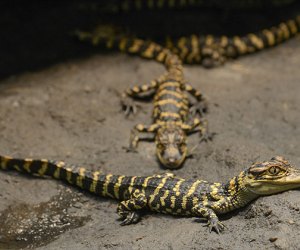
The hatchlings are just the right size for kids. Photo by R. Mickens/courtesy of AMNH.
Crocs: Ancient Predators in a Modern World is fun for all ages. Adults will likely learn something new about the reptiles. One fun fact: These creatures belong to a group of animals classified as archosaurs, which includes all extinct dinosaurs, pterosaurs and modern-day birds. Kids that love dinosaurs and fossils will, of course, enjoy this exhibit, and even kids that aren't dino- or animal-obsessed will delight in the many interactive elements and live critters.
Crocs: Ancient Predators in a Modern World opens to the public Saturday, May 28, in the special exhibits hall on the first floor of the American Museum of Natural History, located on Central Park West at 79th Street. The exhibit runs through January 2, 2017. Museum Plus One admission and timed tickets are required to view the exhibit.
Top image: An American alligator hatchling debuts at the American Museum of Natural History. Photo by R. Mickens/courtesy of AMNH.
Places featured in this article:
The American Museum of Natural History





